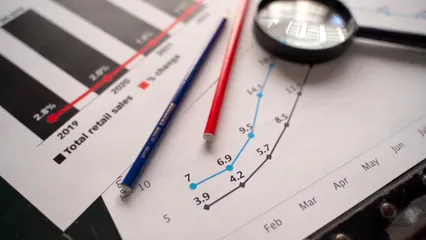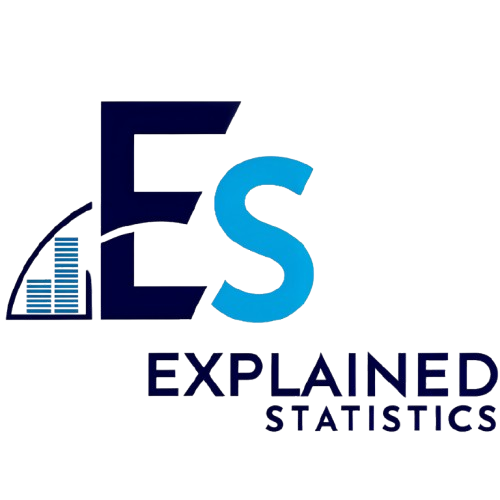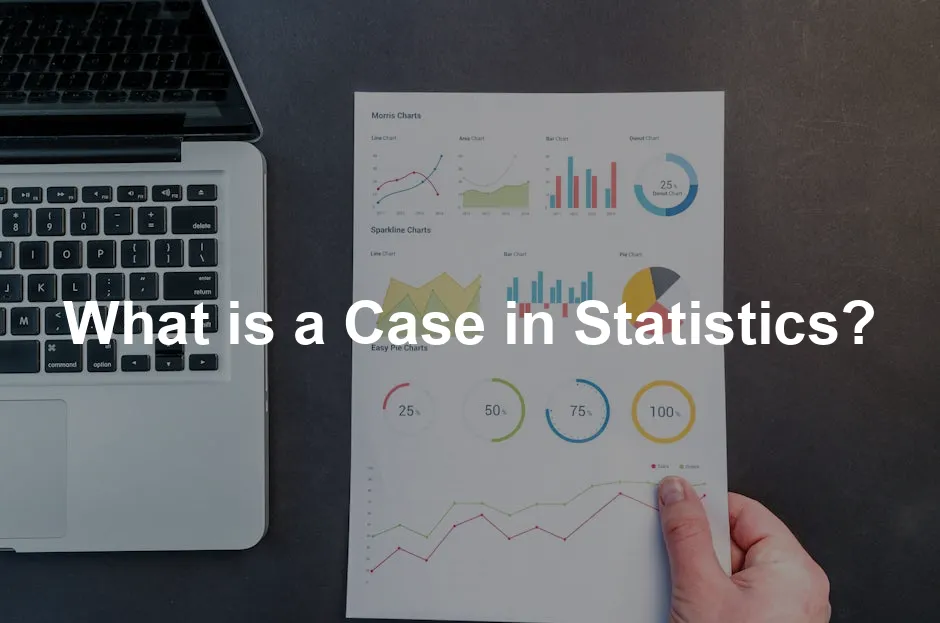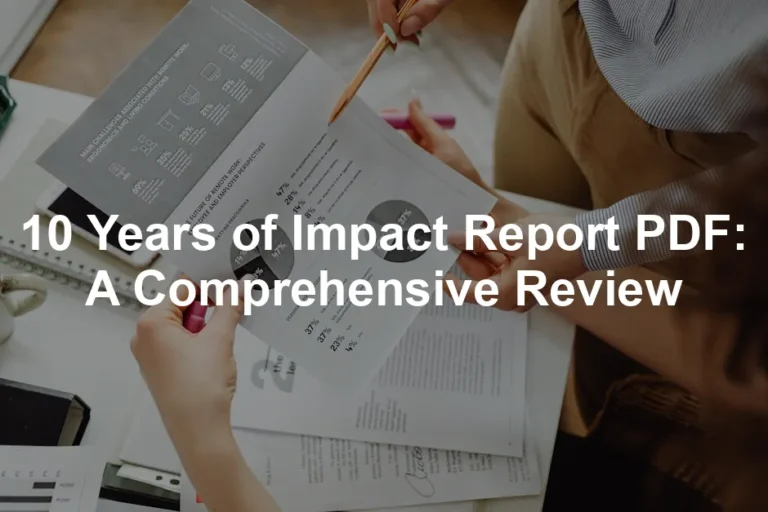Introduction
Statistics is a fascinating realm where numbers tell stories. At the heart of this storytelling lies the concept of a “case.” So, what exactly is a case in statistics? Simply put, a case represents an individual entity or unit from which data is collected. Think of it as the building block of any dataset. Without cases, statistical analysis would be like trying to bake a cake without flour—utterly impossible!
Understanding cases is crucial for anyone diving into the world of data analysis. Each case is tied to variables, which are the characteristics measured. For example, in a study of students, each student would be a case, while their ages, test scores, and study hours are the variables. Grasping the significance of cases helps us appreciate how they influence outcomes and interpretations in statistical studies.
As we unravel this topic, we’ll cover several key points. First, we will define what a case is and explore its interchangeable terms. Next, we’ll discuss how cases relate to variables, providing clarity on their fundamental roles in data collection and analysis. Finally, we’ll present examples from various fields to illustrate the concept in action. Whether you’re a seasoned statistician or a curious newcomer, understanding cases will enhance your analytical skills and deepen your appreciation for data.

Understanding Cases in Statistics
Definition of a Case
In the world of statistics, a case is essentially an individual unit from which data is gathered. Each case is vital, as it provides the unique information that fuels your analysis. Think of cases as the stars of your dataset show—each one shines a light on different aspects of the data you’re studying.
You may encounter terms like “experimental unit” or “observation” in your statistical journey. These terms can often be used interchangeably with “case.” An experimental unit refers to the smallest unit of observation in an experiment. When researchers collect data, they observe these units to identify patterns or relationships.
In a dataset, each case holds a set of values for various variables. For instance, if you’re examining a dataset of customer reviews, each review represents a case. The variables might include the reviewer’s age, the rating given, and the product category. This relationship between cases and variables forms the foundation of statistical analysis.
Understanding cases is not just academic; it has practical implications across various domains. For instance, in education, cases might represent individual students. In business, each store could be a case. In biology, a case might refer to a specific plant species. By recognizing the importance of cases, you can better navigate the complexities of data analysis and interpretation.

To enhance your understanding of statistical analysis, consider diving into Statistical Analysis with Excel for Dummies. This resource simplifies complex concepts and helps you get hands-on with Excel, making statistical analysis a piece of cake!
So, whether you’re crunching numbers, analyzing trends, or interpreting data, remember: cases are the essential units that make it all possible. Get ready to explore the exciting world of statistics, as we unpack more examples and delve deeper into the relationship between cases and variables!
Characteristics of Cases
Data Composition
In statistics, datasets are like a puzzle. Each puzzle piece is a case, contributing its unique attributes (variables) to form the complete picture. A dataset consists of multiple cases, each represented by various attributes that provide essential information for analysis. For instance, in a survey about college students, each student is a case, and their attributes might include age, major, GPA, and study habits. These attributes help researchers identify patterns, correlations, or trends within the data. So, think of cases as the building blocks of your dataset, each one packed with valuable insights just waiting to be discovered!

Speaking of valuable insights, if you’re looking to master the art of data analysis, you might want to check out The Art of Statistics: Learning from Data. This book illustrates how statistical thinking can lead to better decisions, making it a must-read for anyone looking to enhance their analytical skills!
Examples Across Different Fields
– Education: Picture a classroom bustling with eager students. In this scenario, each student is a case. Variables might include test scores, hours spent studying, and attendance rates. Analyzing these variables can reveal insights about effective study techniques or factors influencing academic success. So, next time you see a student buried in books, remember—they’re not just cramming for an exam; they’re a vital case in the grand educational experiment!
– Business: Now, let’s step into the world of commerce. Imagine a chain of retail stores. Each store is a case, with variables like monthly sales figures, customer footfall, and inventory levels. By analyzing this data, businesses can identify trends, optimize stock, and even tailor marketing strategies. So, when you stroll into your favorite shop, know that it’s not just a shopping spree; it’s a statistician’s playground, filled with cases and variables just waiting to be analyzed!
– Biology: Let’s take a stroll through a botanical garden. Here, each plant species represents a case. Variables might include height, age, and growth rate. Researchers can study these cases to understand ecological dynamics, species interactions, and even conservation needs. So, the next time you admire a blooming flower, think of it as a case, contributing to the complex tapestry of biological research!
These examples illustrate that cases exist in various fields, each offering a rich array of attributes (variables) that drive analysis and discovery. Understanding the characteristics of cases is crucial for anyone looking to make sense of data in their respective domains.

If you’re keen on further exploring data science, don’t miss out on Data Science from Scratch: First Principles with Python. This book is a fantastic guide for those looking to build a strong foundation in data science using Python!
Linking Cases to Variables
Case-Variable Connection
Every case in a dataset has corresponding values for each variable. Think of cases as the stars of your data show, shining brightly with unique attributes that contribute to the overall narrative. In statistics, these attributes are known as variables. They offer varying degrees of information about each case, allowing for a deeper understanding of the dataset.
For instance, if we consider a dataset of students, each student represents a case. The variables could include their ages, grades, and extracurricular activities. Each student brings different values for these variables, creating a rich tapestry of information that can be analyzed. This connection between cases and variables is fundamental to statistical analysis. It helps researchers identify trends, correlations, and insights that can inform decisions and strategies.

If you’re interested in understanding predictive analytics, grab a copy of The Signal and the Noise: Why So Many Predictions Fail—but Some Don’t. This book dives into the art of making predictions and understanding the uncertainties that come with them.
Illustrative Examples
To illustrate this connection further, let’s take a look at a data frame featuring students, their grades, and extracurricular activities. Imagine a dataset that includes:
| Student ID | Age | Grade | Extracurricular Activity |
|————|—–|——-|————————-|
| 1 | 18 | A | Soccer |
| 2 | 19 | B | Drama |
| 3 | 18 | A- | Debate |
In this data frame, each row represents a case (individual student), while columns represent variables (age, grade, and activity). By analyzing this data, educators might discover that students involved in extracurricular activities tend to perform better academically.
Now, let’s compare cases from different datasets. Consider educational data and business data side by side. In educational datasets, cases might be students with variables like test scores and attendance. In contrast, business datasets might feature stores as cases, with variables such as sales figures and customer counts.
| Store ID | Location | Monthly Sales | Customer Count |
|———-|———-|—————|—————-|
| S1 | Downtown | $50,000 | 1,200 |
| S2 | Uptown | $30,000 | 800 |
Here, each store serves as a case, and the variables help businesses understand their performance. Analyzing these datasets can reveal interesting insights—like which store location has the highest sales per customer, thus guiding business strategies.
By linking cases to variables in such examples, we gain valuable insights into both educational and business contexts. This connection lays the groundwork for effective data analysis, making it easier to spot trends, compare groups, and ultimately make informed decisions.

Types of Cases and Their Applications
Experimental Cases vs. Observational Cases
Experimental Cases
Experimental cases play a vital role in hypothesis testing and controlled experiments. When researchers manipulate variables to observe outcomes, they are working with experimental cases. For instance, in a clinical trial, a group of patients receiving a new medication represents experimental cases. Researchers may compare these cases to a control group not receiving the treatment, helping to assess the medication’s effectiveness.
These cases allow researchers to establish cause-and-effect relationships. By controlling variables, they can isolate the impact of the treatment. This approach is fundamental in fields like medicine, psychology, and agriculture, where understanding the effects of interventions is crucial.

To further enhance your research skills, consider reading Naked Statistics: Stripping the Dread from the Data. This book breaks down complex statistical concepts into digestible pieces, making it an excellent resource for those intimidated by statistics!
Observational Cases
On the flip side, observational cases are used in studies where researchers do not manipulate variables. Instead, they observe and record naturally occurring phenomena. For example, in studying the eating habits of college students, researchers might collect data on various students without changing their behavior. Here, each student is an observational case, and variables might include dietary choices, exercise frequency, and health metrics.
Observational studies are beneficial for understanding real-world behaviors and conditions. They provide insights into trends and correlations without the complications of experimental manipulation. However, caution is necessary, as these studies might not establish causation. Researchers must interpret results carefully, recognizing that other factors could influence the observed outcomes.
In summary, understanding the distinction between experimental and observational cases is essential for designing effective studies. Each type of case serves its purpose and contributes to the richness of data analysis, helping to answer a wide array of research questions across various disciplines.

Cross-Sectional vs. Longitudinal Cases
Cross-Sectional Studies
Cross-sectional studies capture a snapshot of data at a single point in time. Think of it as peering through a keyhole into a bustling party—what you see is only a momentary glimpse of the entire scene. For example, consider a survey conducted during a health fair. Participants might provide data on their exercise habits, dietary preferences, and health metrics all at once. This method is efficient and provides an overview of the current state of a population.
Another classic example is census data. Each household represents a case, and variables could include income, age, and education levels. This data helps policymakers understand demographics quickly. Cross-sectional studies are great for identifying patterns and correlations, but they don’t allow researchers to observe changes over time.

If you want to delve deeper into statistical concepts, check out Statistics for Dummies. This comprehensive guide will help you grasp the basics and beyond, ensuring you’re well-prepared for any statistical challenge!
Longitudinal Studies
Longitudinal studies, on the other hand, follow the same subjects over an extended period. Imagine keeping a diary of a friend’s life, noting how their interests, habits, or health change with the seasons. This method allows researchers to observe trends, developments, and the effects of interventions over time.
A classic example is a study tracking the same group of students from kindergarten through graduation. Researchers might analyze how various factors like parental involvement, socioeconomic status, and educational resources impact academic performance over the years. This approach provides invaluable insights into causal relationships, as it highlights changes and developments that occur over time, making it easier to understand long-term effects.

Practical Applications of Cases
Statistical Analysis
Understanding cases is essential for effective statistical analysis. Each case serves as a data point, embodying the variables being measured. By recognizing how cases and their corresponding variables interact, researchers can collect and analyze data more accurately. This insight enhances the interpretation of results, allowing for more informed conclusions and decisions. Whether you’re analyzing student performance or customer satisfaction, a solid grasp of cases ensures your findings are grounded in reality.

To further your statistical analysis skills, consider grabbing The Data Science Handbook: A Practical Guide to Data Science. This book covers essential concepts and tools that will elevate your data analysis game!
Case Studies
Case studies are a powerful tool for exploring complex issues in real-world contexts. These in-depth analyses focus on a single case or a small number of cases, allowing researchers to gain a nuanced understanding of specific phenomena. For instance, a case study might examine how a particular school implemented a new teaching strategy and its effects on student engagement. By closely analyzing the context, researchers can identify key factors influencing outcomes.
Case studies often integrate various data collection methods, including interviews, observations, and document analysis. This multi-faceted approach enriches the research, providing a comprehensive view of the case. In fields like education, healthcare, and social sciences, case studies are invaluable for uncovering insights that quantitative studies might overlook. They bridge the gap between theory and practice, offering practical recommendations based on real-world experiences.
In summary, understanding the differences between cross-sectional and longitudinal studies, as well as the practical applications of cases, is vital for anyone engaged in statistical analysis or research. These concepts provide a solid foundation for gathering meaningful data and deriving insights that can drive effective decision-making in various fields.

Conclusion
Understanding cases in statistics is like grasping the building blocks of data analysis. Each case represents an individual entity, contributing to a comprehensive dataset. Whether you’re studying students, retail stores, or plant species, grasping the significance of cases is crucial. They help illuminate patterns, trends, and relationships within your data.
Cases form the foundation of statistical analysis, making it essential to define them clearly. This definition influences how we gather and interpret data, shaping our conclusions and decisions. In business, understanding store cases can lead to optimized sales strategies. In biology, examining species cases can inform conservation efforts. In social sciences, analyzing community cases can help identify and address societal issues.
Encouraging readers to explore the relationship between cases and variables can lead to deeper insights and applications in their fields. Case studies, for instance, provide rich narratives that illustrate the complexities of real-world phenomena. By engaging with cases, researchers can uncover nuances that quantitative analysis alone might miss.
So, whether you’re a statistician, a student, or simply a curious mind, take the time to appreciate the role of cases in your work. The insights gained from understanding cases can drive impactful decisions and foster innovative approaches in various disciplines. Embrace the quest for knowledge and the power of data, as each case you encounter opens up new avenues for exploration and discovery.
FAQs
What is the difference between a case and an observation in statistics?
While the terms are often used interchangeably, a case refers to the individual unit, whereas an observation is the recorded data for that unit. In a dataset, each case may have multiple observations across various variables.
How are cases and variables related in statistical analysis?
Cases serve as the subjects of study, while variables represent the characteristics measured for each case. For instance, in a study of students, each student is a case, and their age, grade, and test scores are the variables.
Can a single case be representative of a population?
Single cases can provide insights but have limitations in generalizability compared to larger samples. While they may highlight particular trends, drawing broad conclusions from one case can be misleading.
Why is it important to define the unit of analysis?
Defining the unit of analysis helps structure research questions and data collection methods. It ensures clarity and focus in your study, guiding how data is gathered and interpreted.
Are cases always individuals?
No, cases can also represent groups, events, or any entity from which data is collected. For example, in a study of schools, each school can be a case, highlighting the importance of defining what constitutes a case in your research.
Please let us know what you think about our content by leaving a comment down below!
Thank you for reading till here 🙂
Understanding cases is crucial for anyone diving into the world of data analysis.
By recognizing the importance of cases, you can better navigate the complexities of statistical research and interpretation.
Understanding the characteristics of cases is crucial for anyone looking to make sense of data interpretation in their respective domains.
All images from Pexels




